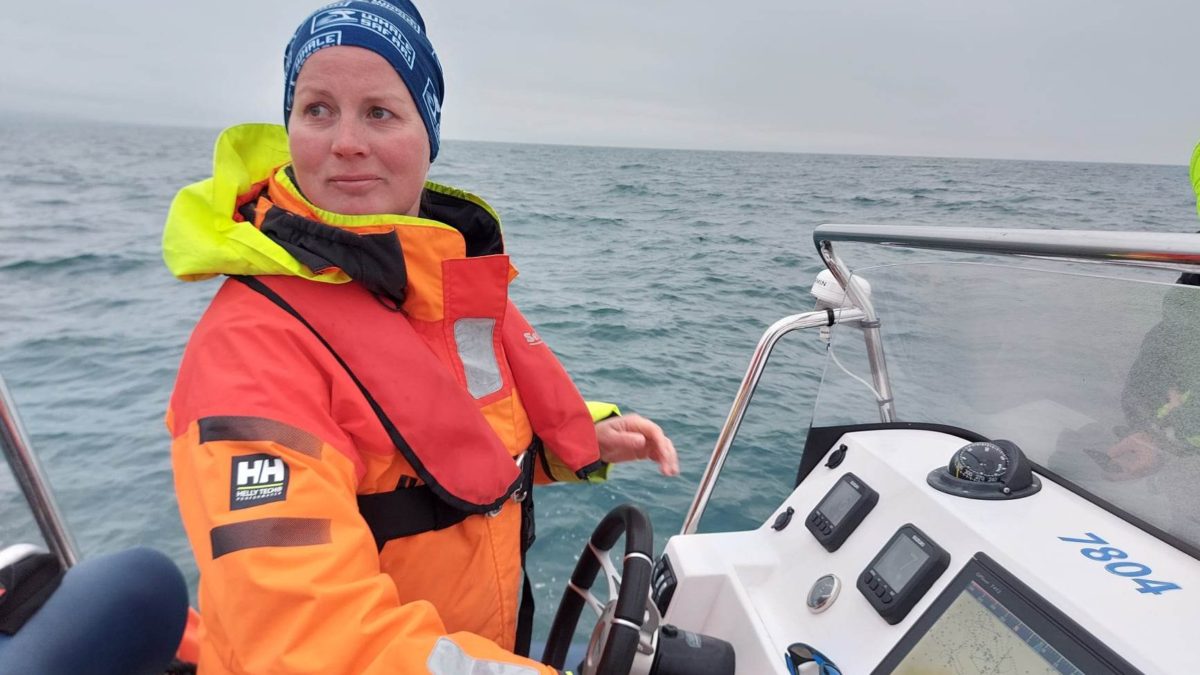Free and exclusive discount codes for hundreds of tours and & travel services in Iceland
Subscribe to instantly receive discount codes for tours, car rental, camper van rental, and outdoor clothing rental. Thank you! ❤️ Jon Heidar, Editor of Stuck in Iceland Travel MagazineI have partnered with Elding for many years, and it has been a great relationship. I am fond of Elding; I always enjoy going out on their whale-watching tours, and, I mean, so far, I have had great luck with them in seeing the giants of the sea. However, Elding is not just yet another tour company. For a long time, they have done their best to provide travelers with eco-friendly whale watching in Iceland. Elding approaches wildlife in a way that causes the least possible disturbance to whales and birds. Elding also minimizes its environmental impact and has worked on that for almost two decades. One of the people working on this effort to be ecologically responsible is Elding’s chief naturalist Megan Whittaker.
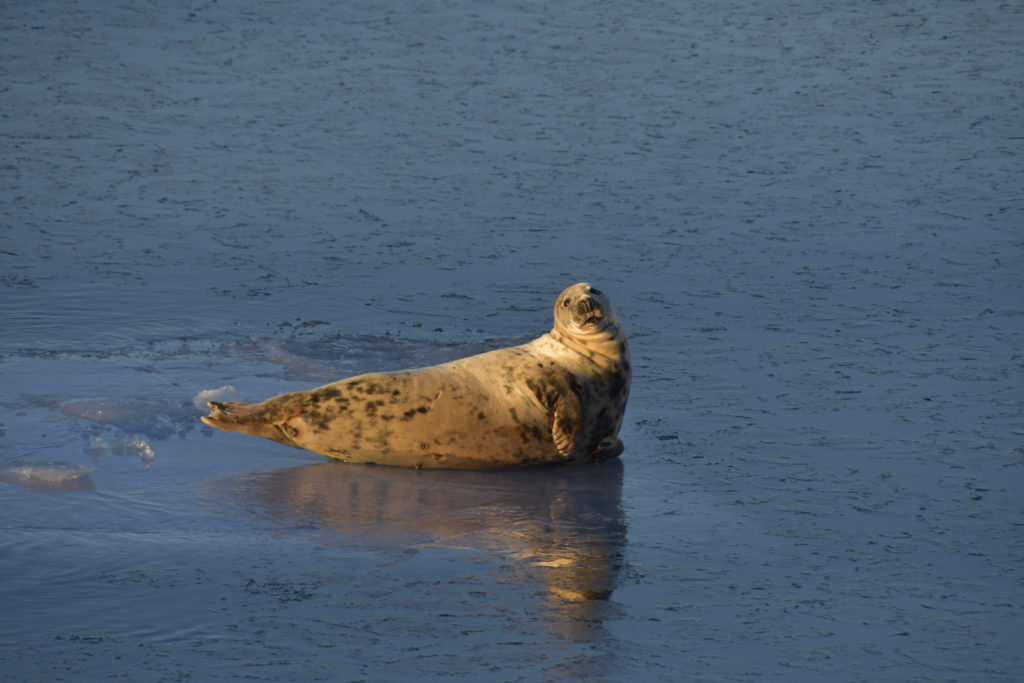
Megan has an MSc in Marine Biology and has worked with wildlife organizations worldwide for the past two decades. The minke whale is her favorite, but she is also a bird enthusiast and a talented photographer.
Hey Megan, thank you so much for taking the time for this interview. Can you give my readers a little background information about you?
Hi, I would love to.
From the very day I was born, I was surrounded by animals. I grew up in a wildlife park environment, and we raised any animals that their mothers neglected in our home. I grew up around: tigers, snow leopards, and caracals, and then we had the general pets that included ducks, geese, goats, rabbits, ferrets, dogs, cats, etc. They were all around me from day one.
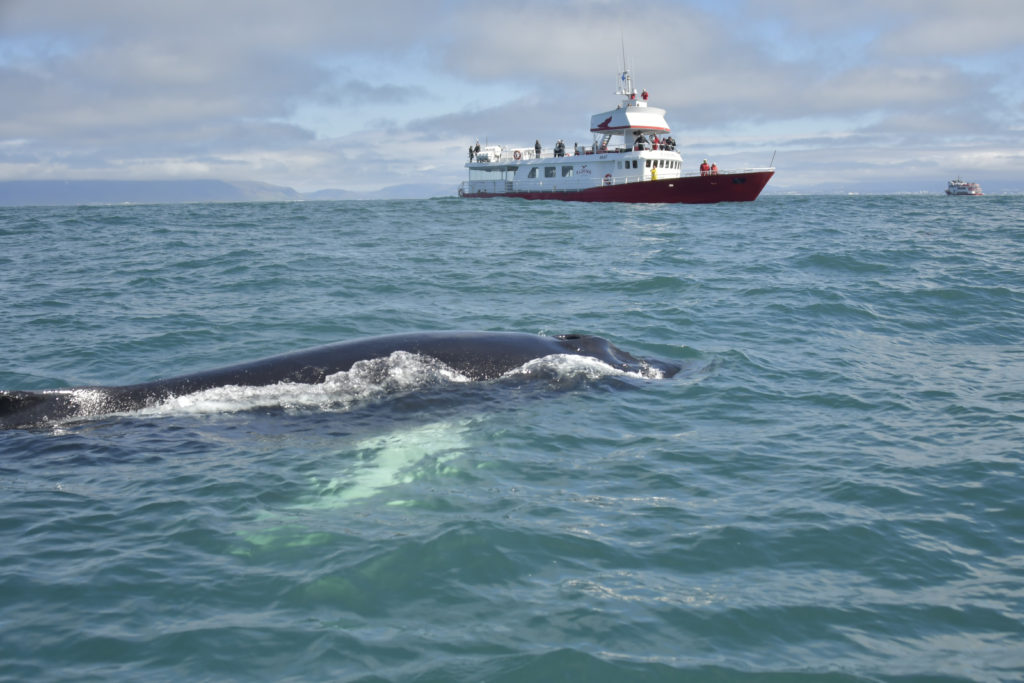
I can´t say when my love for the ocean started; I always had an affiliation with water, perhaps because my grandparents took me to Anglesey, Wales, every summer to fish, learn what was in the rock pools, and jump off cliffs into the ocean. However, my father gave me an interest in working with marine mammals when he invited me to Vancouver to work with Killer whales when I was 14. Since then, I have dedicated all of my education and experience to being able to work on the ocean with these giants.
How did it come about that you settled in Iceland and started to work for Elding?
After living and working (yes, in whale watching) in New Zealand for two years after university, I was looking for something a little more ´local.´ I looked online and saw a research assistant advertisement with Elding, and that’s what I did for my first six months with Elding in 2008, researching the whales and dolphins encountered on the tours. After this, I got my Master’s and returned to be a guide in 2010. I spent the winters involved in other wildlife research organizations abroad but always came back to Iceland. Iceland, by then, was my home, and I began working here permanently. I have managed the guides since 2012, became a RIB captain in 2019, and now I’m married to an Icelander. So here I am to stay.
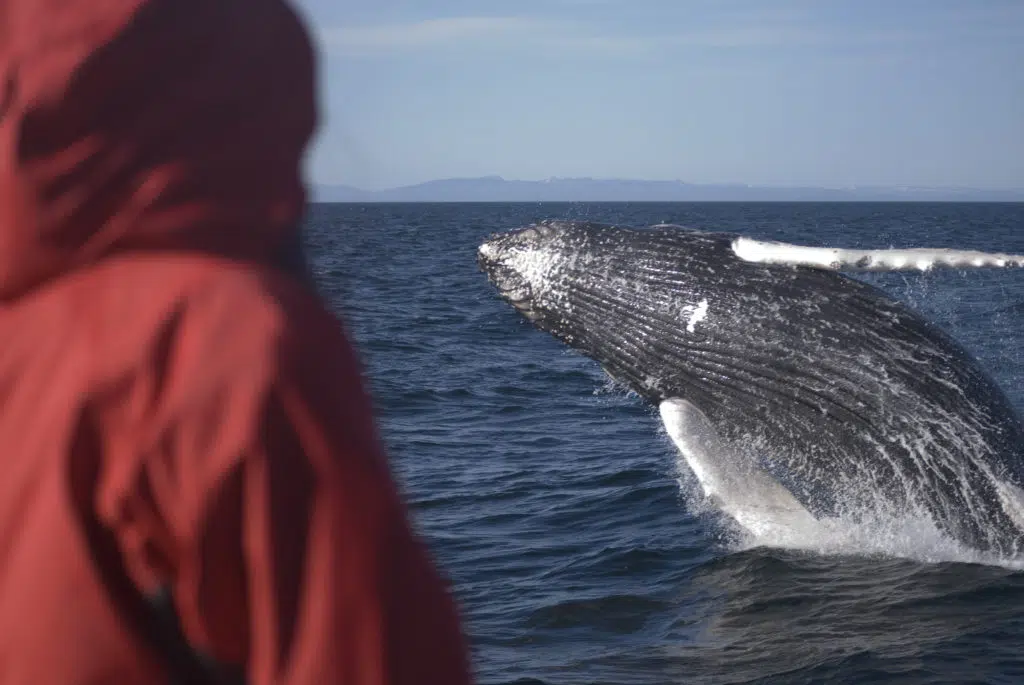
What does it entail to be a chief naturalist for Elding?
Lots of passion, dedication, and patience. Middle management is one of the most challenging positions to be in, no matter the company; I have just been lucky to find a company that has the same values and interests I have and who are incredibly supportive. I have also been fortunate with the guides I have had over the years. I like to promote a team environment. we all do the same tasks no matter their position/title. My job is also to keep up the training with presentations and lectures throughout the year so that we all can learn from each other, improve our knowledge, and continue our progression to improve.
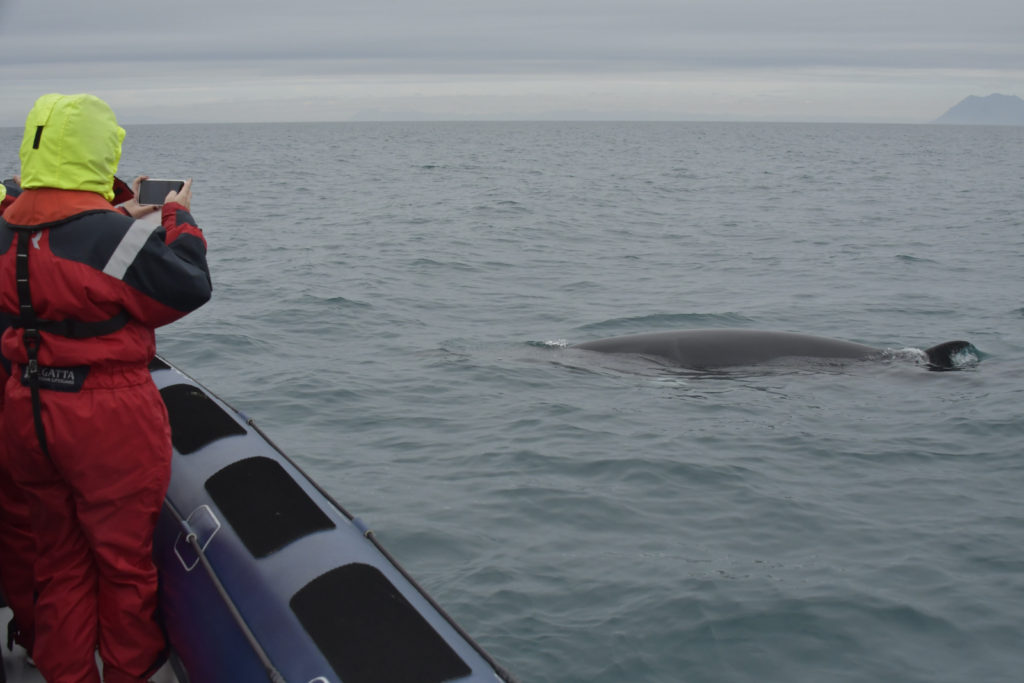
Can you describe how precisely you conduct eco-friendly whale watching in Iceland?
The most direct way to minimize our effects on wildlife is to educate. The naturalists on board are there not just to point and say ´thar she blows, but we talk about the behaviors, ecology, and conservation issues the wildlife we encounter faces and what our passengers can do in their daily lives to help. We explain why we abide by a code of conduct to minimize the disturbance. Why do we leave a sighting early, or why are we keeping a distance, etc.? Education is important.
What is the state of whales around Iceland?
All species around Iceland are currently in a sustainable state; however, I don´t know how long this will last. Fin whaling is continuing, killing 160-170 fin whales a year, some of which have calves). Hundreds of harbor porpoises and seals are caught in lumpfish and cod gillnets a year. More and more humpbacks are getting hit by ships and entangled in fishing gear yearly around Iceland. These whales are here to feed, and then they go 4-6 months without food for their migrating grounds, and we are overfishing their primary food sources. The biggest issue is how climate change affects Iceland’s seabird populations—reducing alarmingly.
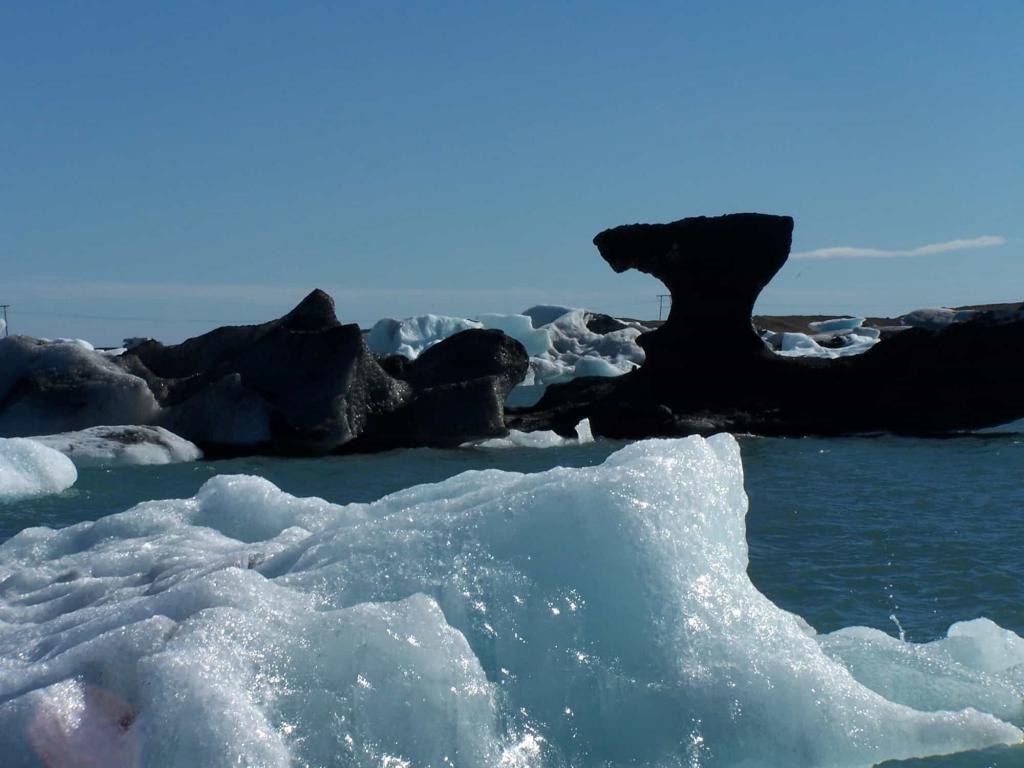
What are your favorite places or activities here in Iceland?
Well, of course, my favorite is whale watching. Even on my days off, I´m on the water kayaking or walking along one of Iceland’s stunning coastlines to watch the birdlife or spot whales. When I can, I visit my favorite waterfall, Dynjandi, in the northwest of the glacial lagoon in the southeast or try to get a glimpse of the reindeer in the east; Locally, I like to go to one of Iceland’s local swimming pools to relax in the hot tub. I go hiking, and In the autumn, I go berry picking (berjamór). One of my favorite activities in Reykjavik is going on the Flyover Iceland simulator, visiting the natural history museum, and getting ice cream like Valdís.
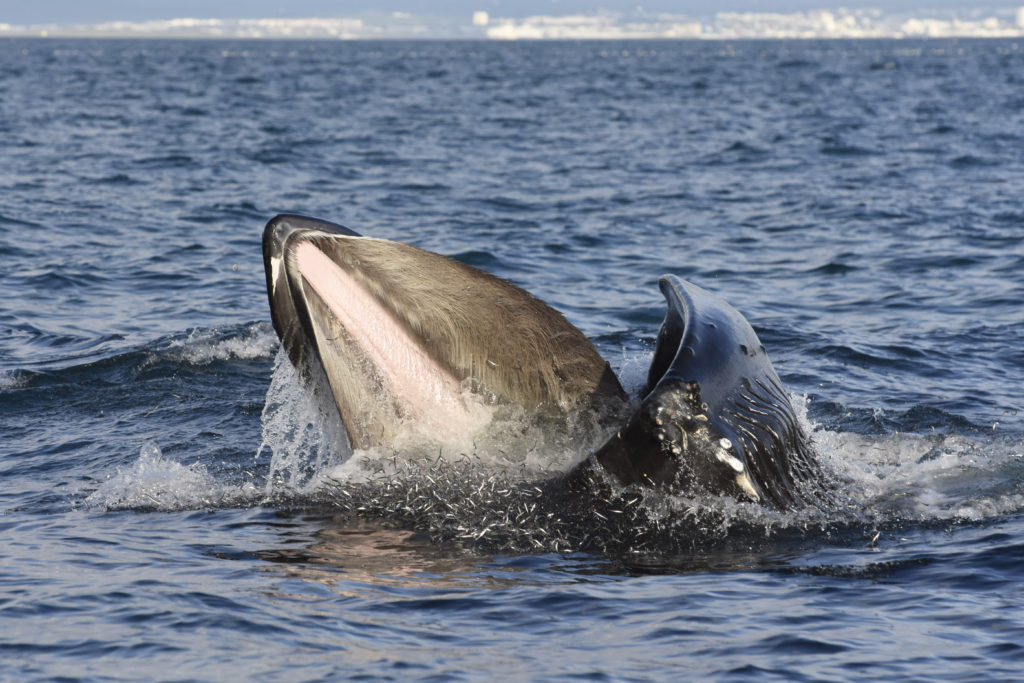
What advice do you have for those visiting Iceland for the first time?
Many visitors come to Iceland in the winter and need to see the northern lights. The best advice I could give is to book their tour once arriving on the best forecasted night to minimize disappointment. I’ve heard of tourists sleeping in their hotel beds on one of the best northern lights displays and booking a tour on maybe not such a great night. Spring is my favorite time in Iceland, March, and April. The snow is still on the mountains, the weather is getting better and warmer, whales are usually in abundance, there is still a great chance to see northern lights, and you’re getting the first sprouting flowers of the year.


